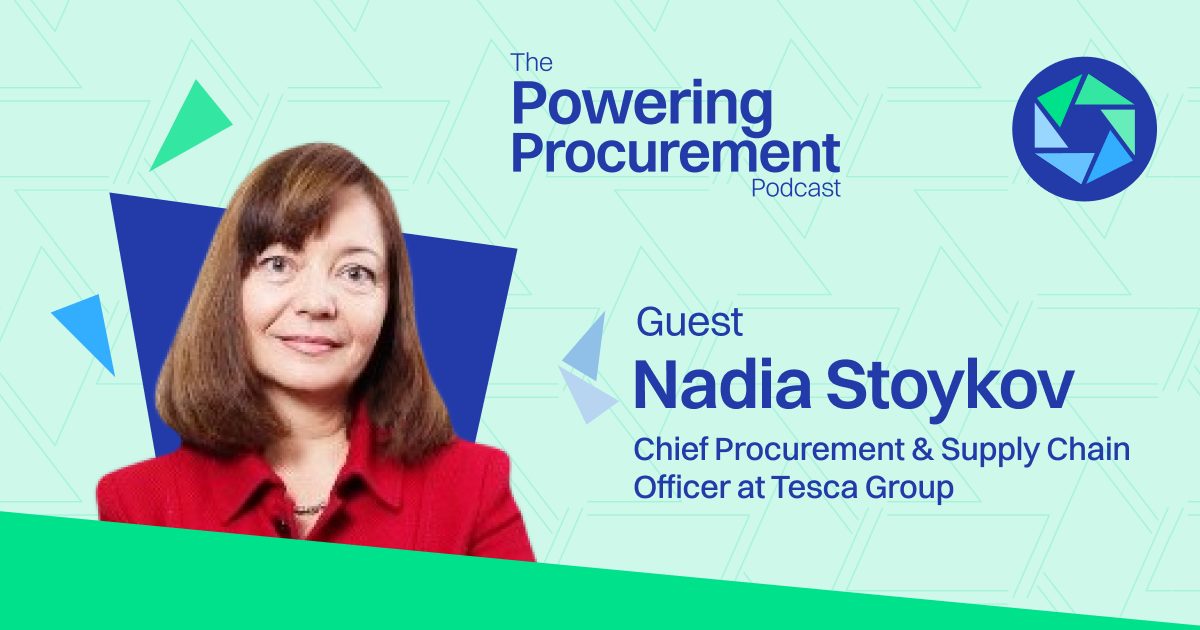“Value buying is not only talking about the price of the product; it’s talking about all the value you can get from the supplier, and this is far more than just a pure price.”
In this episode of Powering Procurement, hosts Sian Lloyd and Gareth Burch are joined by Nadia Stoykov, Chief Procurement and Supply Chain Officer who recently worked for Tesca Group, to share her unconventional journey from law to procurement, why procurement deserves a seat at the strategic table and how companies can unlock massive value by rethinking their procurement approach.
With decades of experience spanning legal, financial and commercial roles, Nadia brings a uniquely all-round perspective to procurement transformation and strategic supplier relationships. Her expertise lies in breaking down organisational silos, building high-performing teams and leveraging procurement as a strategic driver of business value. Before joining Tesca Group, Nadia held leadership roles at companies such as Ahlstrom, Nyrstar, Bristlecone, Valspar, IDEX, and Dow Chemical.
If you enjoyed this episode, make sure to subscribe, rate and review on Apple Podcasts and Spotify; instructions on how to do this are here.
Find on Spotify
Find on Apple Podcasts
Watch on YouTube
Learn More
Are you looking for procurement software designed with you in mind?
Speak to our team today about transforming your procurement function.
Get a Demo
Read Full Episode Transcript
Read Full Episode Transcript
[00:00:00] Sian Lloyd: The Powering Procurement podcast is brought to you by Atamis, sourced to contract software designed to save you time and money. Hello, and welcome to Powering Procurement, a podcast by Atamis, where we unpack the world of procurement and supply chain management with the help of industry leaders. I’m your host, Char Lloyd, and this is our resident expert, Gareth Burch.
[00:00:24] Gareth Burch: Hi. After twenty years in procurement, I may be billed as an expert, but believe me, I’m here to learn too.
[00:00:31] Sian Lloyd: Each episode together with our expert guests, we’ll dive into specific challenges and opportunities facing the procurement industry today.
[00:00:40] Gareth Burch: And we’ll explore easy wins and longer term strategies to help you rise to the challenge of driving value through your work while showcasing the power of procurement.
[00:00:50] Sian Lloyd: So let’s get going. Welcome to Powering Procurement. Today, we are thrilled to be joined by Nadia Stoikov, chief procurement and supply chain officer who recently worked at Tesco Group. Nadia is a globally recognized leader with decades of experience in procurement, supply chain transformation, and commercial excellence. During her career, she’s driven groundbreaking results for multinational organizations, leveraging technology, fostering talent, and championing innovation in some of the most complex and dynamic industries.
[00:01:28] Gareth Burch: Nadia’s achievements speak for themselves. From leading procurement transformations during global conditions to reshaping supplier relationships, Her insights into the evolving role of procurement and her ability to break down silos to build high performing teams makes her a true thought leader in this space. Today, we’ll explore Nadia’s remarkable journey, her vision for the future of procurement, and how she balances technology and human relationships to achieve success. Welcome to the podcast, Nadia.
[00:02:07] Nadia Stoykov: Thank you very much, guys. I’m thrilled to be here. I’m looking forward to our exchange.
[00:02:13] Sian Lloyd: It’s lovely to meet you, Nadia. And just starting really where Gareth left off, it would be great to hear a bit about your journey, your story. How did you come into this area, into procurement as a profession?
[00:02:28] Nadia Stoykov: Well, actually, it was not intentional, but somehow it developed. It developed over time. I’m a lawyer, uh, by training. Then I took an MBA finance. And when I started working in business, um, I started working in a very unique and reputable American company, Dow Chemical. Uh, and the good thing there was that they were rotating people every two years to different areas, which actually gave you a great opportunity to see and understand business from different points. And, uh, that rounding experience actually was something that I appreciate today the most. I have to say, if I can do it again, I would do it exactly the same way. Because you need to know business from different points of view to be effective in one field. So I did almost everything but research and development, obviously, in the technical skills there. It has to be at a different level, But, uh, that was a good experience because it gives you all the facets of this complex business structure that if you don’t know it, it’s pretty hard to take to the next level any experience. And, you know, being a lawyer and being a natural extra word and a people person, I have to say that. Uh, I liked very much the interaction and relationship field in sales because I’ve been in sales, I’ve been in commercial fields, but I like the the the drive for efficiency and improvement that supply chain on monkey grid. And finally, I have to say that in the past fifteen years, I have concentrated all my experiences around procurement and supply chain just because of that. And because of the fact that I saw what a huge opportunity there is in procurement, because it’s totally underrated in many of the companies and industries that be. Procurement was considered always somehow like a technical discipline, and you can book anybody there and just give them a spreadsheet, and you’ve solved your problem. And nobody’s thinking how significant procurement is in every. Because if you look at the total revenue, about 90% of this revenue comes from procurement efforts. So if you’re very good at procurement, you affect 90% of the cost of the company, which means that, uh, with every, you know, touch and value that you add to to that equation, you increase the profit, the margin, uh, and actually the success of the company. And this is something that nobody’s talking about. They all talk about sales and how much we sell, how big of a profits we make, what are our profit margins. Yeah. But your profit margins with a bad procurement contract could beat them up in seconds. Right? Because this is where the control is lost. And in my opinion, uh, that’s something that we will see in the future, procurement getting more and more attention everywhere. You can see it in the public sector as well. Why you’re so mad how your money are spent, let’s say, on a governmental level? How do you know that this is the most efficient way of doing it? Are you asking questions? Yes. Everybody is asking questions, and this is the right way to go. But that’s why we need to have a high level of professionalism in procurement. And this is this has been my mission to convince the companies I work for how important procurement is and to demonstrate what an impact you can have even with one contract, even with one raw material. And this has happened in my career several days. But, again, this takes time to single, so to say.
[00:06:37] Gareth Burch: I think the bit which makes me laugh all the time is most of the people, if not all the people who come on the podcast, have never set out for a career in procurement, and procurement’s always found them, um, which is it’s a reoccurring theme.
[00:06:53] Nadia Stoykov: This confirms the point. Because, for example, when you go to business school, I’ve taken my MBA in The US. At My time, it was top three, uh, public schools in The US, very good school. And you know what? We studied marketing, deduction, finance, everything else but procurement. And, uh, I’m wondering why because there is so much to learn. And even today, because afterwards, I went for executive education and so on and so on. But even today, this is not sort of a topic that in every business school, there is at least some dedicated time to go into depth, to study, to look at case studies, to to just understand what is the impact, because the impact is truly huge. And, uh, that’s why it’s like it’s my mission that we bring this up, and that’s why nobody says, I want to be a procurement specialist because they simply don’t know what it is sincerely, and they just stumble on it by default at the end of the day. Afterwards, they may discover, no. Actually, it’s not so bad. It’s very interesting profession, and it’s really fun to be. I can tell you, I prefer 10 times more to be in procurement than to be in sales. Why? Of course, it’s much better to be a customer. It’s very good to be a customer. You know? You have a lot more leverage being a customer, but nobody’s talking about these things. And, again, you know, we train our salespeople. There are, uh, account executive courses and how to do it. How do we train our procurement people? This is the other side of the coin. Because, sincerely, if you know how to sell, you will know how to buy as well. And there is a lot of psychology there. It’s a lot of, um, what can I say, legal foundation that you need to add? It is important to understand, but you need to know as well, uh, very well how the business functions, not only your function, so to say. And this is something, again, that, uh, we need to develop in the future, and very few companies in the world, this is well developed. Everywhere I I’ve been and in every company I’ve been, there are huge opportunities. And that’s why we always call them transformation because it’s a low hanging fruit. It needs to be taken from one level to the other depending on, you know, the development of the company because each company is a different stage of development based on complexities and so on. But there is always something that could be done everywhere. So, um, yeah, that’s why it’s an exciting field because opportunities are bang for
[00:09:55] Sian Lloyd: And that’s something that this podcast, um, certainly tries to shine a light on, Nadia, which is the profession, um, as a whole, the opportunities, also the challenges, but very much putting it in a spotlight, um, and recognizing, you know, the need to to draw more people into it. So thank you for sharing your thoughts, um, at this stage, particularly on that. And, also, it was really interesting what you said about the relationship between procurement and sales. And I know that you have spoken about this in the past, and it’s something we’d like to find out more about that relationship during the podcast. But perhaps just to, um, to rewind, uh, to your focus and how, I suppose, that you’ve evolved over your career to get that that wider context to start with. There are key issues, aren’t there? I know that you’ve spoken about in terms of well, we mentioned them in the introduction around innovation, around talent development, and digital transformation. They were all words that you’ve brought to the fore. I mean, just how important and key are they, do you think?
[00:11:09] Nadia Stoykov: All of them are important, but the first starting point is position procurement where it belongs, meaning put it in the spotlight, give it attention, and then the next step is create a strategy and assemble a key. Okay? So we will reach the next stage a bit later because I’m not going to talk about the tools before I start talking about the people that are going to use the tools Because artificial intelligence, uh, digitalization, like, these are tools. But depends who’s using them. You know? You give them to a monkey, monkey is not going to do much with it. Right? But what do we need to build is first, build a team. How do you build a high performing team in Paculum? The first thing that you need to do is after you have a strategy and communicated your strategy and got your peers on board, let’s say got the attention of, uh, the executive, uh, team that this is something that is very important and we need to, uh, we need to work on, then you have to motivate the people. And, uh, how do you do that? You know, often, what I find is that, uh, people coming from all different departments have been landing in procurement without much thought. So nobody really Yeah. Appreciated their character, their skills. They said, oh, yeah. They’ve been fifteen years with the company. Okay. Good. But wait a minute. If I’ve been fifteen years in the company as an engineering, production is working. And if I’ve been as a salesperson, it’s another. Why? Because for procurement, you need two sets of skills. You need to have, uh, interpersonal skills very well developed on high level because you communicate with external partners apart from the internal audience in company, but external partners, your suppliers, and the public in general. And that’s why you need to be very skillful in communication. And very often, what happens in companies is that a very talented r and d researcher, uh, who already passed through all promotional levels in RDD is promoted to procurement. Okay? But by definition, these people are, you know, introvert science guys. They they have no commercial or, uh, you know, um, skills, let’s say, relationship building skills on an outside level. And you’re representing the company. That’s why what I’m trying to argue is that, uh, these people that you put in procurement are actually the face of your company. When the salespeople are the face of your company, procurement people are the face of your company. Why? They go out there in the market, and they buy what you need. And, you know, they represent who you are, and you have to build a certain, uh, images, integrity, professionalism, capability that, uh, inspires trust. And this is what we need to first establish and train within a team. Do we have the right skills in the team? And if we don’t have the right skills, you could train them. Okay? Or you can change assignments because there are certain roles in procurement that do not necessarily require supplier interaction, for example. But the typical role requires supplier interaction. So this is one part of skills which is very similar, if not the same, with the skills of the salespeople. Now the other part of the skill is that you need to be, uh, very meticulous and very prepared and professional about how, uh, you approach a supplier, a negotiation, and how you follow-up. This is what is true for sales as well. This is one of the weaknesses there as well. Because it’s not just the point of meeting with people and reach an agreement, you have to follow-up on this agreement. Even if you’re a brilliant negotiator, you could not leave things like that. You need to communicate this through the company in the appropriate time, appropriate way, and so on. And as well, you need to follow-up with the supplier, and you need to continue maintaining the relationship because it’s not enough to just talk to them and three years later, when the contract expires, call them again. No. It’s a networking effort that needs to happen. Doesn’t matter if the is still valid. Why? Because you actually have, uh, an excellent way of learning what’s happening with your supplier, and you need to be very vigilant about that. Companies come and go. You know? They go through troubles. You know? You need to know all of this. If you’re in a in a relationship with this company, the supplier, you need to maintain this relationship and make sure that, uh, whenever there is something good, bad, or different, uh, your counterparts in the company know about that, and you anticipate. That’s how you manage the potential risk of the supplier. That’s one way of managing the potential risk. And this is something that requires personal efforts and require sensitivity, uh, how to approach people, and as well, how to make them feel comfortable, but at the same time, keep the question.
[00:16:44] Gareth Burch: I really like, um, what you’re saying to be fair and that relationship side. Um, sometimes, um, um, from experience, we treat the supplier’s arm’s length or too too far away to them and us. And within, um, the whole chartered industry procurement supply, the SIPS programs, we talk about win wins. How do we hit a win win if we won’t work with the supplier and collaborate with the supplier? So it’s it’s definitely interesting. One thing, though, you you said, which, um, um, I I agree with all of it, number one. But one thing I I would, uh, almost challenge a little bit is when you establish the procurement function, your your ordering was really interesting, uh, with people, technology, move forward. For me, I I’ve always approached it the other way around, weirdly. And I’ve used the technology to create the data to make to allow me to make informed decisions of where potential, uh, low hanging fruit is actual low hanging fruit is, opposed to a guy in IT saying you could save a load of money over here. But it’s one where I’ve always done the technology, but the infancy of a technology, um, almost something which allows me to capture data for me to identify the opportunities to then build the team to target the opportunities. But, otherwise, I I would a % agree with your approach, but that was could be down to personal preference because I’m very much a tech tech guy, so I love tech.
[00:18:22] Nadia Stoykov: No. No. No. No. And, actually, I can argue because you can have the best set of date. And then the other thing is I started with building the strategy. How do you build the strategy? First, you need to understand what your company is buying, which are the big chunks, which are the big categories that could be globalized and be global, and which are the ones that are local or can be managed in a different way. This is the starting point. And, of course, this presumes that you’ve had good data. Now we are going to go further down the line probably about technology a little bit because there are many things around master data in data, which are very important to mention here because without them, uh, procurement is lost. It’s true. You could not shoot in the dark without data. It’s very important to know how to read the data, what to make of it, and, uh, as well to have a reliable trustworthy data. Okay. And often what I found out, um, and correct me if, uh, is many companies many companies, um, because they have grown through acquisitions and they have acquired different bits and parts, They love them as they are. They love the master data the say, uh, the same as it used to be with the previous company. Nobody did any type of unification of master data, and many times the opportunities are lost in between. Because something that in Spain, uh, is called one thing in Spanish, and Italian is called something else, and is something else. The fact is one product with three names. But these are exactly the opportunities we’d have to find out. Instead of going and playing on the boutique principles, little small quantities of this product, when the coal company could gather the the total buy and actually buy it and redistribute. And, actually, the supplier has been duly distributed to the different sites that you have. And today, believe it or not, this is like a regular way of doing business, and people cannot understand that why I could not make savings. Yeah. But you have to look at the bigger picture. And that’s why when you have a global company or a international company, it doesn’t have to be global. With multiple sites, with complexity, you have to first look and ask yourself a question. Let me see what are we find. What have we done last year, for example? Let’s start from there. The other thing which is very important about data is, uh, how what is your process in the company of creating products? So when you create a product, you know, product has a certain formula, how it is or process how it’s produced. And in this formula, you have different quantities of different raw materials. And very often, you have four, five, six, seven formulas depending on the raw materials because you can replace them. K? These formulas as well are not unified. And because they’re not unified, there are many raw materials which are exactly the same, but with little difference in specification. Let’s say the length is three millimeters less, but now we create a new product, a new raw material. No. No. No. But wait a minute. Well, uh, the machine could take three millimeters or even five millimeters of. Right? But, no, we create a new SKU. We create a new. And what does that mean? It just, uh, segregates the buying a way that you could not aggregate it for the benefit of the tenant. K? Uh, another thing that is is very important, uh, we talk about the ts, clarify the roles and responsibilities. Once you define what is there to buying this company, you have to define the biggest categories, find out who are your most capable people, and handle the biggest categories to manage. Okay? And, uh, again, this is quite important because one person needs to have an overview of what’s going on with this raw material or machine or whatever that these people are buying. K? It is important to have transparency. It’s important to have KPIs. It’s important for these people to start analyzing what they can do. And not only in the silo, but, of course, with, uh, the help of production, with the help of, uh, technical guys, uh, and so on. So it is important to have clear roles and responsibilities and, uh, very transparent anecdotes. So knowing who your partners are and what you’re giving to them and what they have to give to you as information.
[00:23:15] Sian Lloyd: Nadia, I want to just return to that point, which did, um, strike me that you said you wanted to talk about people and how important the people issue rather than the tools were that that’s what comes first for you and then the tools. Are there any tips that you can give or any advice? You know, how can companies ensure their procurement teams are equipped to execute these top level strategies, you know, particularly in global and complex organizations? Is there any advice that you can
[00:23:48] Nadia Stoykov: can give? Well, actually, that’s the job of the leader, But to find out, but, yeah, that’s why it’s not so easy to be a leader even now because you’re not having a a simple turf that you have to that you have to manage. You have to it’s it’s like a a big orchestra. This orchestra, everybody could be brilliant position, but in order to make a music out of it, you need a conductor. So I had to say that in order to make everybody play in tube, you have to make sure that not only they understand the big picture, but they have a depth in their own area. And, uh, what kind of people you need? You don’t need magicians. You need intelligent people who have, uh, first, their attitude is to contribute. Their attitude is to do well. They understand what’s the role of procurement and how they can actually impact the entire organization. Very often, I’ve seen people that don’t know how their job contributes to the rest of the organization. But if you don’t communicate the price on pie that you negotiated with supplier, for example, then you know what happens? We continue buying, um, because the buying process is very automated due to the tools, buying on prototype price. You know the difference between negotiated price and prototype prototype price? It’s is probably 10 times. Okay? And then let’s say, three months later, we discover that, actually, why this is so expensive? We negotiated such a good price. Oh, yes. But I forgot to communicate the new price to our pricing, and it’s not in the system. You know? I’m just giving some extreme examples, but believe me, this happens. So beyond
[00:25:39] Sian Lloyd: why I wanted to ask you as a leader, Nadia. That’s exactly why I asked you the question. Carry on.
[00:25:46] Nadia Stoykov: And, you know, it’s very important that you got well organized process. And this process is, uh, by the way, we’re going to start talking about technology. That’s where technology kicks in, but the process needs to be very clear. Many of these tasks which are not so interesting and require, you know, meticulous follow-up today with artificial intelligence. I haven’t seen it yet done, but that’s where the future is. That’s what you can automate. You could not automate a negotiation, but you can reuse artificial intelligence for your preparation of data, for your collection of data, for your communication and sending follow-up emails to the whole organization and dating the systems and keeping the data clean and giving you reminders when the contracts are expiring and so on. That’s where technology can really kick in. And I’m not talking, uh, simple ERP system. I’m really talking of the new, um, Gen AI, uh, that is developing today, and, um, I haven’t seen it in real life because today it’s used for, you know, I don’t know, other purposes, but not particularly industries. But this is where the future is. For example, cleanup of master plan. I mean, this is the most kiddiest job you can give to a person. Nobody likes to do it. K? And, uh, it requires attention. It requires following a process and so on. Perfect for artificial intelligence. Really perfect. And this is where we can really step to the next level by introducing technology. I would say to all the procurement, uh, people out there, don’t be afraid of loopholes. Don’t be afraid for your jobs. Nobody’s going to replace you in the key activities, in relationship building, uh, negotiation, and finding the opportunities. But use artificial intelligence even today for roles that are tedious for you, that you don’t like to do, that are too much to be done. Okay. Let somebody else do it, and then do it better than you and faster than me. And the more, of course, the artificial intelligence lawyers, the more successful this, uh, this is going to be. But still people will be critical. And, um, you know, the maturity of the people, how they interact with others, uh, how they create a win win scenario, and how they create value buying is very important because value buying is not only talking about the price of the product. It’s talking about all the value you can get from the supplier, and this is far more than just acute thoughts. K? And that’s something, again, it takes a vacation and it takes experience, but, again, it’s not rocket science. Everybody could do it, uh, provided that they have desire to do. And sincerely, the more you get into the depths of procurement, the more interesting it gets because you find out more and more what other things you can do. You wanna start getting creative and innovative about your approaches to people. What can you do? So for example, um, I remember a couple of years ago, we just had couple of very key products that we bought in such a small quantities that we could never achievable price. And then, you know, I challenged my team and I told them, let’s find who are the other companies that buying these products and make a buying consortium. So we buy together with them. They buy as well a little quantity, but we negotiate together. We get the the best price from the, well, from the producer. And then, you know, we we just get as much as we need, and that’s what we hit. And guess what? We achieved the price that we could never could dream of on our own. But you have to think out of the box because there are many opportunities out there. And especially today with this communication media, you’re just one click away from everybody else around the world. So this is getting easier and easier, in fact.
[00:30:15] Gareth Burch: On the consortium front, do you have, uh, any advice or guidance how to approach a consortium from a relationship perspective with what could be for competitors?
[00:30:28] Nadia Stoykov: No. No. It’s an idiot competitor. Normally, the other industry no. No. No. No. Yeah. Away. Otherwise, it’s price fixing. You could be accused of price fixing or something. No. It should be other companies that buy the same product. And, you know, there are many. And, again, you can find out even from your supplier who are your other customers. They’re only from totally different industries. Does it have to be from your industry? Okay? You just have to and you approach them. That’s what we did. We approached them, and we start talking. And they said, yeah. I don’t mind. Okay. You give me some of your volume, then I get from somebody else. And then at the end of the day, you have a lot of volume. Then we go together for negotiations. We negotiate the prices, and then do the delivery addresses are different different comforts. Right? So it was not really so difficult. Well, it took a lot of talks to prepare. Right? But once it’s done, it’s not so difficult to execute. So what I’m saying is, uh, disaggregation of bias. I mean, there are other ways that you can do to to actually improve your cost position. And today, especially with this inflation and raw materials going, uh, up to like, it’s important to have these levels. It’s important to think out of the box because sometimes you’re up to the wall and you don’t know what to do. Okay? And not always you can increase the prices to customers because you can be in market share, for example. So, yeah, it’s it’s a balancing act, what I’m trying to say.
[00:32:15] Gareth Burch: Yeah. And it’s quite interesting, uh, picking up the end bit then on, uh, inflations because, uh, one question we had was around, um, how you’ve faced supply chain disruptions through unprecedented challenges, um, from the geopolitical tensions to the pandemic, um, disruptions. So it’s from that perspective.
[00:32:39] Nadia Stoykov: Yeah. I can tell you the pandemic. Actually, I was really lucky because, um, just before the pandemic, I was advocating like crazy that we need to establish major consignment stocks in all of our plants. Okay? And finally, we did that, and we did it just before the world was closed for, uh, for the pandemic in 2020. And this was super lucky. Why? Because then you remember, uh, how long it would take for a product to come from China, from Indonesia, from around the world because there were no vessels and nobody was working and the factories were closed and so on. This buffer stock rechanged the year. And I want to say to to anybody out there, because I’ve heard many times, why, uh, supply chain and procurement have something in common? And let’s talk about that. Because, actually, supply chain is the extension of procure. Procurement is when you make the contract, when you set up the conditions. But the execution of your contract and the effectiveness in your contract happens in supply chain. And that’s why it’s very important to make sure that you you enable your production unit and your supply chain to do the best job possible, to have the best, most reliable deliveries, to have the best packaging, to have the the best, uh, buffer stops in order to breach situations like this because, uh, you know, this tremendously helps if you have more product on-site, then you don’t worry till the last second. Is the product going to or I’m stopping the line of the customer, and then I have to pay millions and zillions. Right? Uh, that’s why it’s really important to have very close cooperation. What I would, uh, what I’m saying to my team, everyone in procurement, the first thing you need to do is go to the plants where your product is used, and you understand what they produce, how they produce it, and why this product is important, and what they consider important. Don’t read the technical specification. Sorry. This is not so important. You need to know. And for example, I’ll give you a very simple example with epoxy resins. Uh, we, uh, produced in tax in Tesco, um, car seats. Okay? And the stuffing of the car seats is made of, uh, foam, and the foam is formed with epoxy. Okay? Different epoxy producers had different viscosity of products, slightly different specifications. Anytime you change a supplier, you have to clean the tanks. The tanks are huge. You have to clean the tanks, and a cleaning of a tank costs a minimum of €23,000 just to clean because contamination could cause problems, and then you could create waste. And now we when I arrived there, I discovered that we had a a great procurement manager that every two months was changing the supplier because somebody would give him, like, 50¢ less per ton. Okay? I said, are you crazy? And do you know the cost? And not only the cost, but then the waste. You have to change the formula. You have to test it again if you change the supplier. What the production guys want, we go and ask them is give me one supplier so I can steady the process in a way that I produce minimum waste, I have the best conversion cost possible. That is what you need to think about in procurement. How many people think about that? Very few. I can tell you very few. And that’s why you we think we did a great job in procurement, and we lose the value in supply chain. But we have to think the other way around. Why we are in procurement? To buy product, to produce something. But then we have to consider what is important for this box. Right? And that’s how you add additional value to the price. Because sometimes for them, it’s more important that you deliver in certain type of packaging, that they don’t have to unpack many bags. You know? Because this is labor. This is ours. This is slowing the process. Or a big bag that they have no crane to put into the silo or whatever. I mean, these are little details. You think that they’re little details, but that’s a lot of work that you create on the workshop. And if you consider the cost of that, what savings can you deliver? Marginal. You know what I’m saying? So you got to get a transparency of the whole process in order to ensure that the deal that you’ve made there with the conditions, because these are some of the conditions you have to talk about with the supplier, are done in a proper way and well communicated down your business. And then create because your bowling lines is not only to create the best value, but as well to create the smoothest process to produce something without interruptions, without hiccups, without changing of tools, without cleanups, and without waste.
[00:38:06] Sian Lloyd: So, Nadia, what I’m hearing is really that the mission, the call is for procurement teams to be equipped or empowered, really, to contribute more strategically to their organizations.
[00:38:22] Nadia Stoykov: Absolutely. And, you know, the confidence level on the procurement people is not there yet. Not all of them really know how to state their fagging and to state it in a proper way because at the end of the day, uh, function is not an island. That’s why I’m talking about silos. Forget about the silos. The more silos you have, the worse performance your company is going to have. You know? If you don’t create small cooperation, understanding, and as well, uh, communication across the chain, you’re not going to be successful. Doesn’t matter if you do brilliant job in one spot. All of the facts are going to be report off when you go down the line. And, you know, it’s a waste. Why put the efforts when you could not pick the fruits at the end?
[00:39:16] Sian Lloyd: Yeah. Really, really good point, and lots for us to think about there. Um, we spoke earlier about the relationship between procurement and supply chain and also procurement and sales. And I’m just gonna take you back to that point of procurement and sales just to dig a little bit deeper there because I know that this is something that you speak a lot a lot about that is really important to you that you think is absolutely key. Um, how can procurement teams perhaps be empowered or encouraged to think or adopt more of this sales like mindset? And and just how important is that to you?
[00:39:57] Nadia Stoykov: It is very important. And that’s why when we do trainings with my team, I always bring salespeople and who play roles. Okay? Because it’s very important for a salesperson, You know? That’s why it’s good if you’re in procurement, especially on the car global, be you have been in sales before because you know very well what is the goal of the salesperson. Let’s say, when I go to negotiation and I know that, let’s say, there is a certain price this salesperson needs to achieve, and I see him that he’s very stubborn. He doesn’t want to make even one step back. You know? And I understand and say, okay. Listen. Let’s make a. You have to go back to your boss and say, I achieved this price. Correct? He said, yes. Correct. He said, okay. Good. But what I want you to give me is consignment stock. I want different packaging. I want to add other value. Okay? So and he said, no problem because that’s not on his scorecard. You understand what I’m saying? Then you achieve your deal, and you make a good deal for your company even if the price is, like, little 1%, uh, different from what you’re talking about. Yeah. But then you get, uh, longer payment terms, and then you get something else. And at the end of the day, the salesperson, you have to put yourself in the shoes of the salesperson, which is in front of you. Goes to the boss and says, look. I’ve done it. I got all the volume, and look at the price that you gave. He’s a hero. Okay? Oh, by the way, we agreed to other things, but let’s not talk about that. Supply chain is going to sort it out, and that’s where I love it. Okay? Because this is the true wing, and that’s why I’m saying you have to be you have to feel like a salesperson in order to know how much to push. And, again, because if you push too much, you may achieve nothing. But you’re not there to achieve nothing, and you’re not there to have a zero sum game. Okay? There is never such a thing. Even if you have a zero sum game just because of the circumstances, these people will drop you and retaliate behind your back at the worst possible moment, and you don’t want that because you want to build the relationship with these suppliers. You’re going to be years with them, and you’re going to be you know, your product depends on them. You know that what they produce is really critical for your product. So you have to keep the good relationship there, but at the same time, you have to make it profitable for you. And they have to make it, uh, profitable for them as well. Otherwise, that doesn’t work. So, uh, finding the subtle balance and not being super aggressive is very important. Okay? That’s why I personally think, uh, that, uh, in my experience, the best procurement people are women. Okay? Because men are usually a lot more aggressive, and they’re willing to push it to the brink. And very often, things fall apart. Okay? That’s not necessary. You’re winning nothing from a little bit there. Okay? And, uh, I’m I’m saying that because procurement is not considered, uh, something where the women work. It’s not a function usual function to put women. Yeah. Yeah. Yeah. You put them, you know, let’s say, customer service or something. No. No. No. No. No. On the contrary, the women know how to buy, know how to negotiate, and come to build relationship, and they’re very meticulous, professional. They maintain follow-up and so on. So I think that, uh, you know, that’s something to consider because the extreme aggressiveness, the extreme pushing to the limit is may work, let’s say, in isolated cases, but for short period of time. And procurement is a long range game. It’s not something that, you know, I buy and I disappear. No. No. No. No. I continue to buy. I will continue to build. So we need to respect each other. Very important.
[00:44:34] Sian Lloyd: That’s really interesting what you say, um, about women given the landscape of procurement. It is becoming more diverse, but are there still big challenges in terms of equality and inclusion remaining?
[00:44:57] Nadia Stoykov: I think that it depends on the leader. Okay? If the leader sees that, um, you know, it’s a pure, uh, question of skills and capabilities and, uh, that you need to have a diverse team because the dynamic in the team is much better what the team is diverse. Okay? Then everything is okay. The problem is that in many companies which are really male dominated, procurement is seen as a career step for technical people, which I do not agree with. And, for example, salespeople that develop to a certain level in their career are not given the opportunity to go to procurement at least for a couple of years, and then maybe they go into sales management. Why? Because if they go to Perfirmon, they’re going to see how difficult it is to buy, and they will understand much better how to sell because they see the other side of the moon, in fact. And it’s important that that you have a balanced view in order to be good in whatever you’re doing. And that’s why I do not think that career in only one area is is really twenty first century. This is 20 century thing that you start in procurement and you retire in procurement. No. The more you go around, the more you learn, the better diverse view you get, and you really contribute more. You get more innovative, even changing industries. You know, I tell you technical specifications of products is nothing to worry about. You don’t need to be a chemist. You don’t need to be a physician to know the technical specifications of bolts and parts and whatever. There are always technical people in the company that will tell you very clearly what they want. And, normally, the salespeople that you meet as well, they’re not so technically at the day. They just take some some other technical, you know, colleagues to help them. That’s not the important part. The important part is to build the relationship. This is the difficult part, not to exchange specifications. And that’s why I would encourage, uh, the businesses really give opportunity for people to take pro procurement, um, of salespeople, of production people, even if you want production engineers. It’s possible because then you see, uh, a different side of the business, and you more fully understand how everything functions.
[00:47:30] Sian Lloyd: And that brings us onto our final question that we ask all of our guests on this podcast series because Powering Procurement podcasts, um, were set up really to shine a light on the profession. Um, we must probably don’t need to tell you, Nadia, that recruitment is a and retention is is a challenge in a lot of different sectors and industries, but we want to spread the word here about the positives of a career in procurement. So perhaps for our younger listeners, particularly, or those who are considering a career change, why are you happy that you have gone into procurement?
[00:48:15] Nadia Stoykov: Well, I’m I’m happy because, uh, I think that this opens up a different horizon. And it’s very interesting profession, which, uh, you can make something out of. Okay? So there are endless opportunities. If you’re a creative person, uh, it’s something for you because you can innovate, you can have different approaches, and it’s a very people oriented profession. K? It’s just like sales. It’s just like customer service, but on a higher level because you commit the resources with a lot of responsibility. You commit the resources of your company to, uh, you know, your suppliers, and you have to be extra careful what you do and how you do it. At the same time, there is a pleasure in being a customer, as I said. Everybody’s pampering. Everybody’s trying to please you. Okay? I’m saying this in the very good sense of the word because if you want to feel good about yourself, that’s one thing that you’re not going to feel in sales. Okay? Because when you sell, you’re the pusher, and people don’t like you very much. Just think of it. Okay? So, you know, think about that, but it’s a good profession. It will not disappear. Okay? Artificial intelligence is not going to sign contracts. For sure, no. The artificial intelligence, they they prepare the contracts. But then you’re the one to go and convince the other party that this is the right contract for them. Okay? And that’s why the skills that you develop there, the human interaction that you have, today, most of the modern professions are computer, myself, in a room. Okay? I mean, this is computer, myself, and the rest of the world, and it’s not always in a room. And it’s a lot of interactive communication and ability to talk to people, to communicate with people they’re trying for for that. That doesn’t exclude technology. On the contrary, technology will help you, but technology is not going to do the relationship you’ll be for me.
[00:50:39] Sian Lloyd: Absolutely. Nadia, thank you so much for sharing your insights with us today. It’s been fascinating, Garik, hasn’t it?
[00:50:45] Gareth Burch: Oh, it’s been great.
[00:50:47] Nadia Stoykov: Thank you for giving me the platform to to share some of my thoughts because, uh, I’m sure that many people would be interested to hear just a different point than you.
[00:50:57] Sian Lloyd: Thank you for joining us today on the podcast, Nadia.
[00:51:01] Nadia Stoykov: You’re welcome. Thank you very much, guys.
[00:51:04] Gareth Burch: That wraps up this episode of Powering Procurement. We hope you enjoyed that as much as we did.
[00:51:10] Sian Lloyd: Visit our website at atamis.co.uk or follow us on LinkedIn to continue the conversation.
[00:51:17] Gareth Burch: Remember to subscribe on YouTube and follow us on Spotify, Apple Podcast, or wherever you choose to listen.
[00:51:23] Sian Lloyd: Thanks for joining us, and see you next time on Powering Procurement. The Powering Procurement podcast is brought to you by Atamis, source to contract software designed to save you time and money. Choose the apps you need from pipeline and tender management to supplier and contract management. Get the tools to power up your procurement. Visit atamis.co.uk to learn more.
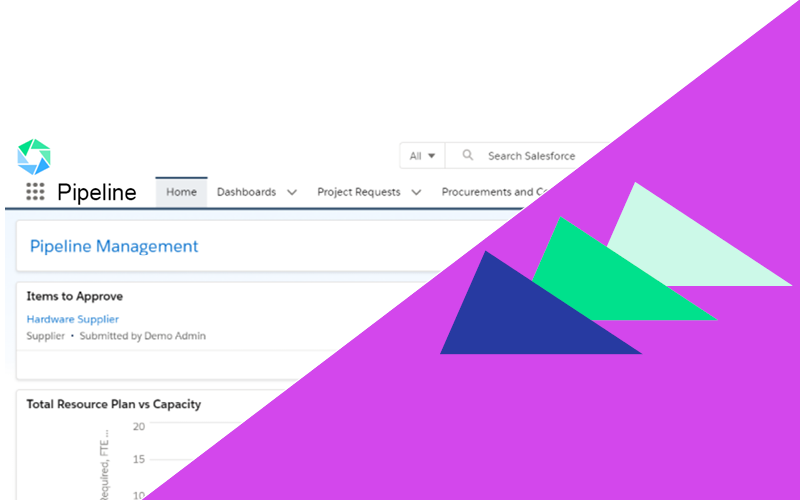 Our Pipeline App empowers your team to plan ahead and forecast for upcoming procurement activities.
Our Pipeline App empowers your team to plan ahead and forecast for upcoming procurement activities. 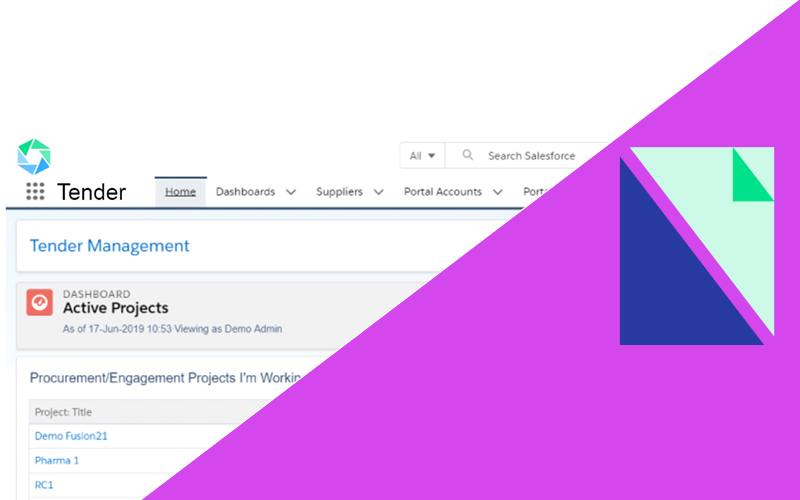 The Tender App allows your team to visualise all sourcing activities within your Atamis platform, from issuing tenders to receiving bids.
The Tender App allows your team to visualise all sourcing activities within your Atamis platform, from issuing tenders to receiving bids.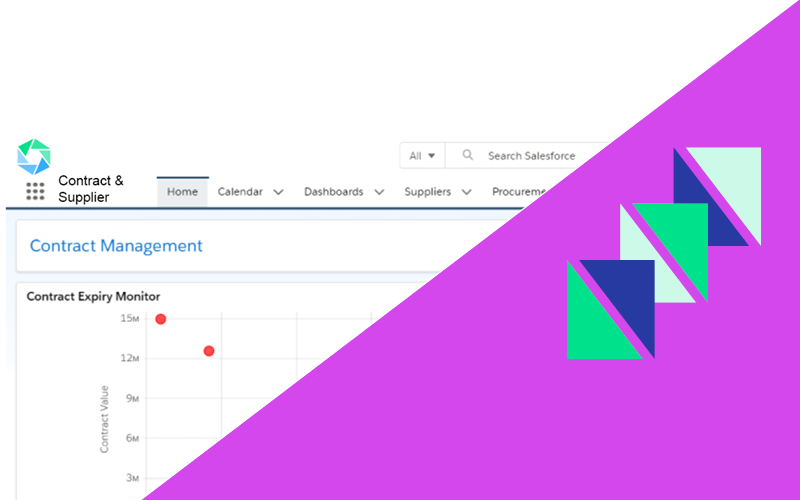 Our Contract & Supplier App puts your team in firm control of your key supplier relationships and provides a central repository for all contracts.
Our Contract & Supplier App puts your team in firm control of your key supplier relationships and provides a central repository for all contracts. 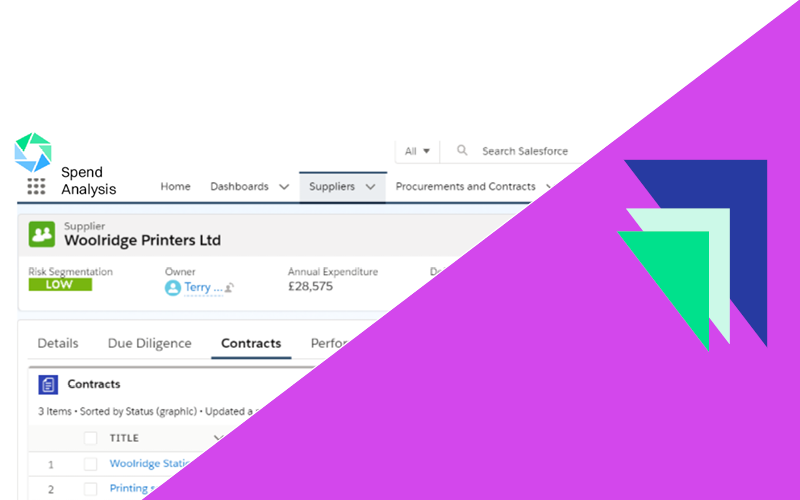 Our Enhancers ensure your solution is tailored to your needs. Pick and choose additional functionality that fits your requirements.
Our Enhancers ensure your solution is tailored to your needs. Pick and choose additional functionality that fits your requirements. 